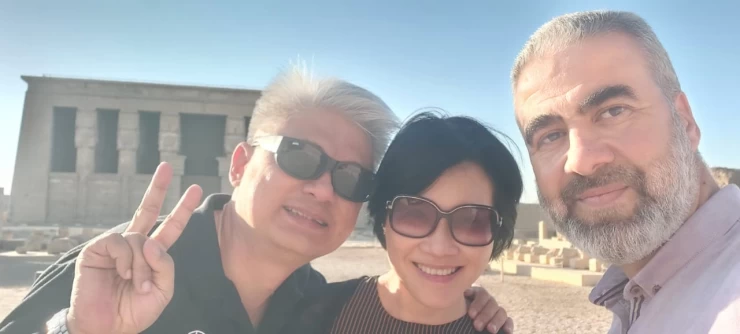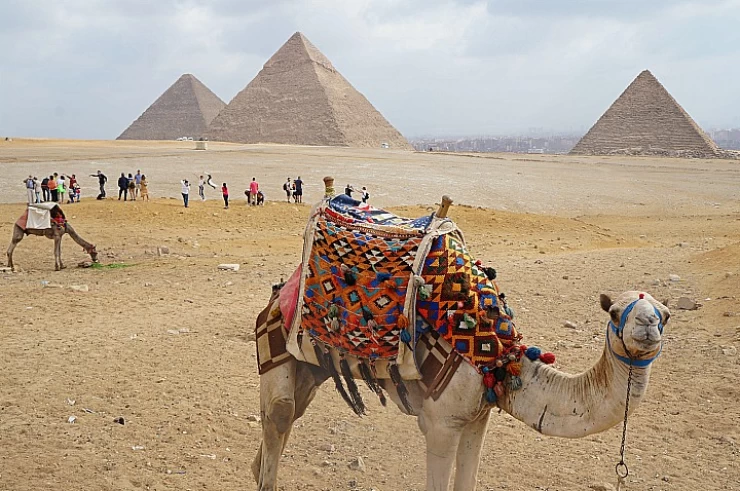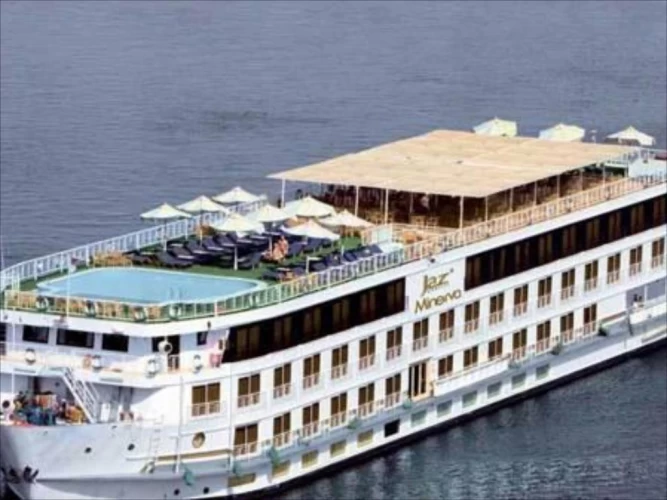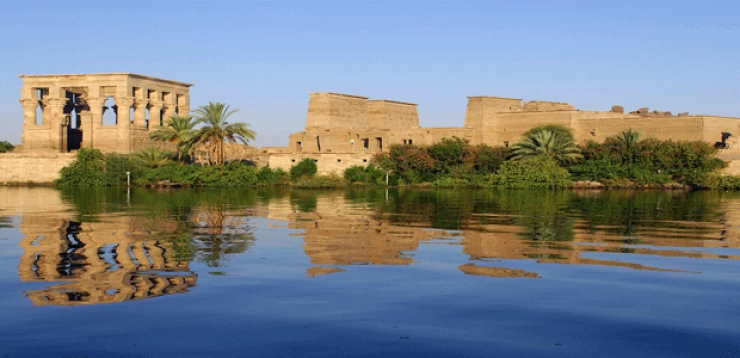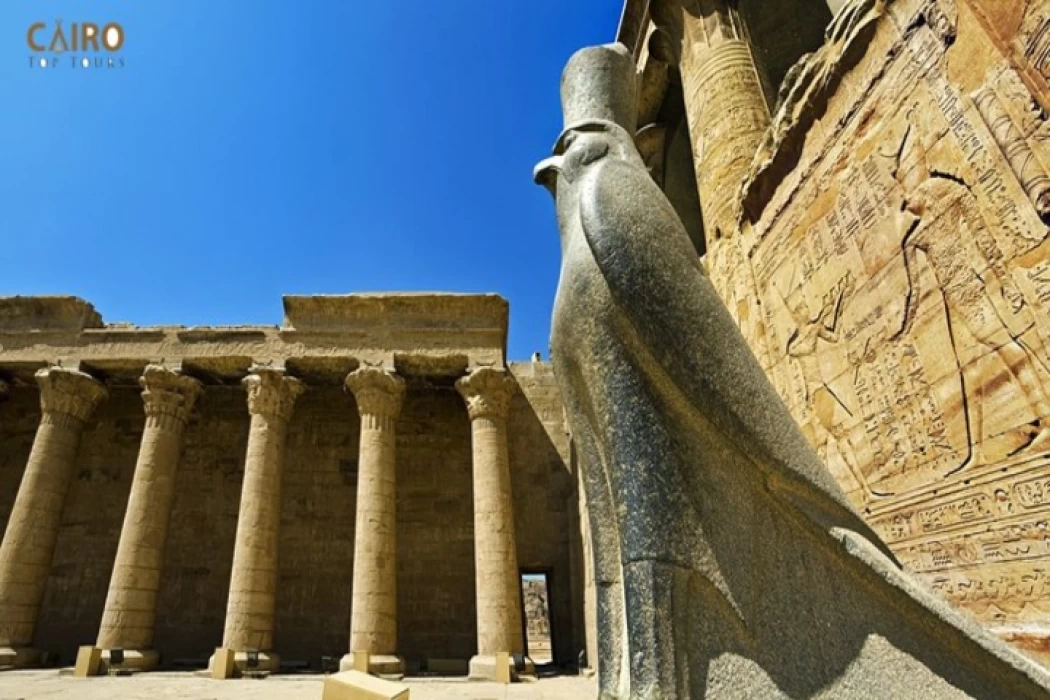
Edfu Temple
In the Hellenistic period, the city was known in Greek as Ἀπόλλωνoς πόλις and in Latin as Apollonopolis Magna, named for the major god Horus, who was recognized as Apollo under the interpretatio graeca . It is one of Egypt's best-preserved shrines. From 237 to 57 BC, the Ptolemaic Kingdom constructed the temple. The inscriptions on its walls include valuable information on language, mythology, and religion in Egypt throughout the Hellenistic period. In particular, the Temple's engraved building texts "provide details [both] of its construction, and also preserve information about the mythical interpretation of this and all other temples as the Island of Creation. Additionally, there were "important scenes and inscriptions of the Sacred Drama which related the age-old conflict between Horus and Seth. They have been translated by the Edfu Project. Edfu was one of several temples constructed during the Ptolemaic Kingdom, among the Dendera Temple Complex, Esna, the Temple of Kom Ombo, and Philae. Its magnitude indicates the relative wealth of the time.The current temple, which was built "on 23 August 237 BC, initially consisted of a pillared hall, two transverse halls, and a bark sanctuary surrounded by chapels. The structure was begun during the reign of Ptolemy III Euergetes and completed in 57 BC by Ptolemy XII Auletes. It was built on the site of an earlier, smaller temple dedicated to Horus, but the prior construction was orientated east-west rather than north-south, as the current edifice is. A ruined pylon sits close to the east of the existing temple, and inscriptional evidence has been discovered indicating a building program under the New Kingdom rulers Ramesses I, Seti I, and Ramses II. A naos of Nectanebo II, a remnant from an earlier edifice, is kept in the inner sanctuary, which stands alone while the temple's bark sanctuary is encircled by nine chapels. Following Theodosius I's persecution of pagans and edict prohibiting non-Christian worship inside the Roman Empire in 391, the temple of Edfu was no longer used as a sacred monument. Many of the temple's carved reliefs were destroyed, as was the case elsewhere, by Christians who came to govern Egypt. The charred ceiling of the hypostyle hall, which can still be seen today, is thought to have been caused by arson to eliminate religious imagery that was considered pagan at the time. Over the years, the temple was buried to a depth of 12 meters (39 feet) beneath drifting desert sand and Nile-deposited river silt layers. Locals erected homes immediately on the historic temple grounds. When a French expedition discovered the temple in 1798, only the upper reaches of its pylons were visible. In 1860, Auguste Mariette, a French Egyptologist, began the process of removing the sands from Edfu Temple. The Temple of Edfu is almost completely intact and serves as an excellent example of an ancient Egyptian temple. Its archeological significance and excellent level of preservation have made it a popular tourist destination in Egypt, as well as a common stop for the many riverboats that cruise the Nile. In 2005, a visitor center and paved parking lot were added to improve access to the temple. A lighting system was installed in late 2006 to facilitate night visiting.







